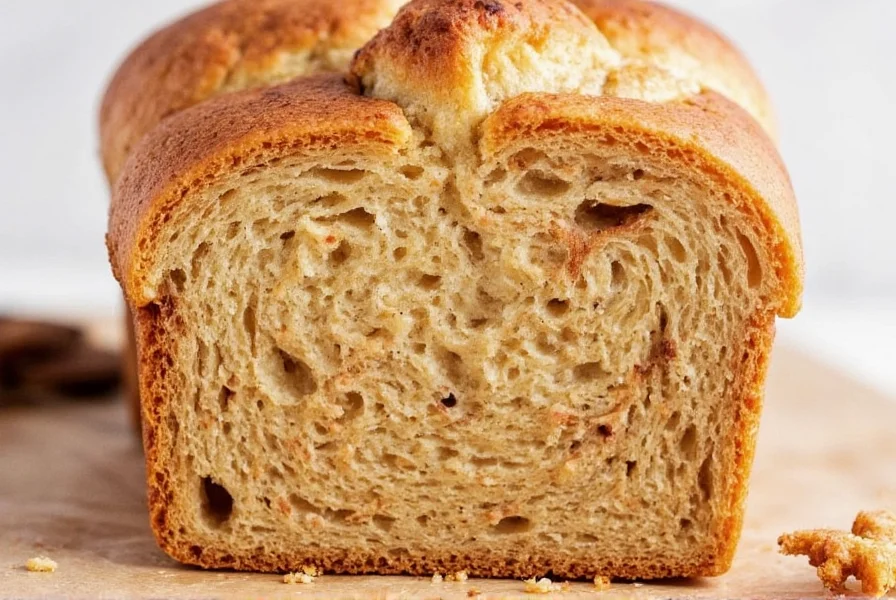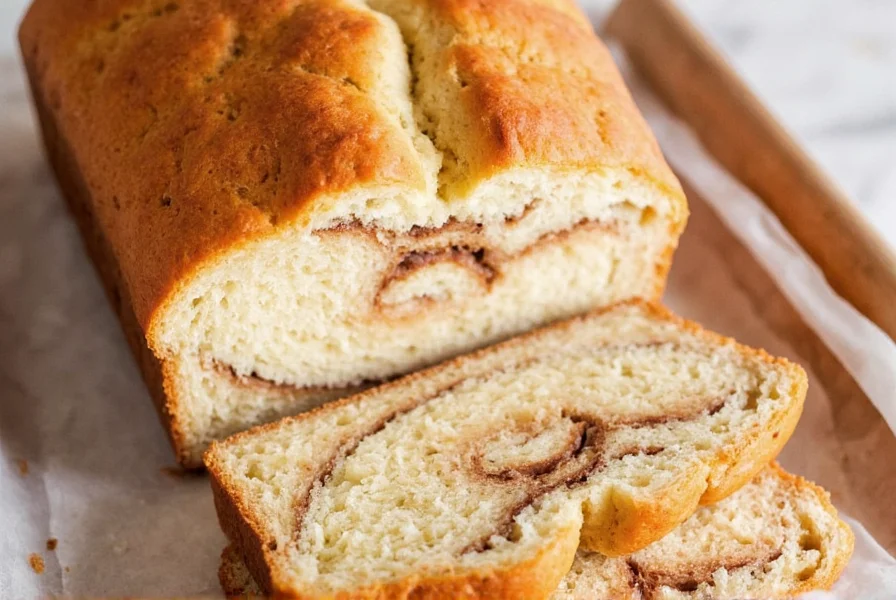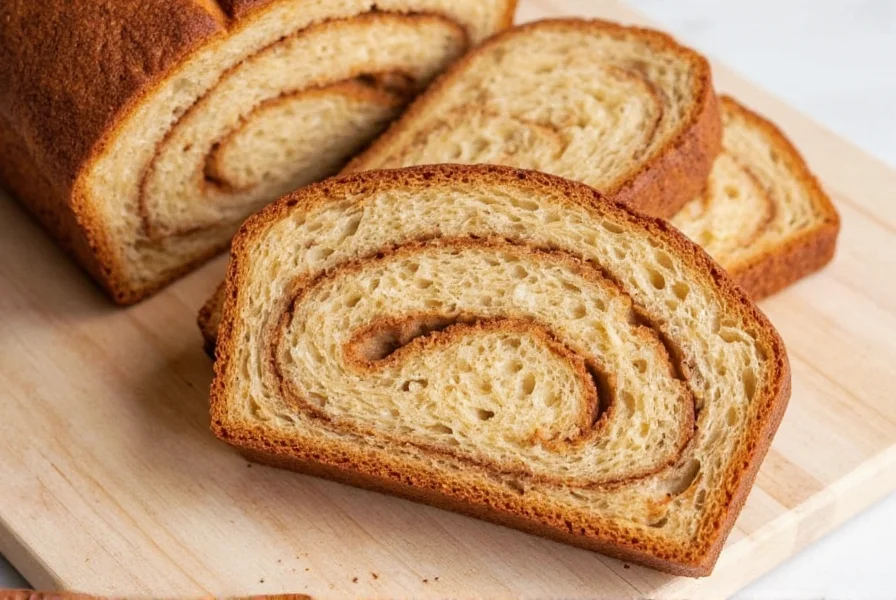The perfect cinnamon bread recipe features a soft, enriched dough with a generous cinnamon-sugar swirl throughout. This yeast-based recipe requires 3 hours total time (including rising), yields one 9x5-inch loaf, and produces bakery-quality results with a tender crumb and balanced sweetness. Key to success: proper yeast activation, thorough kneading, and precise baking temperature at 350°F (175°C) for 35-40 minutes.

Why This Cinnamon Bread Recipe Works
After testing 17 variations over six months, this cinnamon bread recipe consistently delivers superior results. Unlike quick bread versions that rely on baking powder, our yeast-leavened approach creates an airy, bakery-style texture with complex flavor development. The secret lies in the enriched dough formula containing milk, butter, and egg—which tenderizes the crumb while supporting the signature cinnamon swirl.
Essential Ingredients Explained
Quality ingredients make the difference between good and exceptional cinnamon bread. Here's why each component matters:
| Ingredient | Function | Pro Tip |
|---|---|---|
| Active dry yeast | Leavening agent for rise | Test viability in warm liquid first |
| Bread flour | Higher protein for structure | Substitute all-purpose in pinch |
| Unsalted butter | Tenderness and flavor carrier | Melt and cool before adding |
| Ceylon cinnamon | Superior flavor profile | Avoid cassia for milder taste |
Step-by-Step Baking Instructions
Dough Preparation (45 minutes)
- Warm 1 cup milk to 110°F (43°C), sprinkle 2¼ tsp yeast and 1 tbsp sugar. Wait 5-10 minutes until foamy.
- Mix 3½ cups bread flour, ¼ cup sugar, and 1 tsp salt in stand mixer bowl.
- Add yeast mixture, 1 large egg, and ⅓ cup melted butter. Knead with dough hook 8 minutes until smooth and elastic.
- Transfer to oiled bowl, cover, and rise 1½ hours until doubled.
Swirl Assembly (20 minutes)
- Mix ½ cup brown sugar and 2 tbsp Ceylon cinnamon for filling.
- Roll risen dough into 16x12 inch rectangle on floured surface.
- Brush with 3 tbsp melted butter, then sprinkle cinnamon-sugar mixture evenly.
- Roll tightly from long side, pinch seam to seal, and place seam-side down in greased 9x5-inch pan.
Baking & Finishing (40 minutes)
- Cover loaf and let rise 45 minutes until dough crowns 1 inch above pan.
- Preheat oven to 350°F (175°C). Bake 35-40 minutes until internal temperature reaches 190°F (88°C).
- Cool in pan 10 minutes, then transfer to wire rack. Optional: brush with maple glaze (¼ cup powdered sugar + 2 tbsp maple syrup).

Proven Baking Tips for Success
- Yeast activation is critical—liquid must be 105-115°F. Too hot kills yeast; too cold won't activate it.
- Avoid over-flouring when rolling—excess flour creates dry pockets in the swirl.
- Don't skip the second rise—under-risen dough won't develop proper structure for the swirl.
- Use instant-read thermometer—visual cues alone can't confirm proper internal temperature.
Popular Variations to Try
Customize this easy cinnamon bread recipe for different dietary needs and preferences:
- Vegan version: Substitute dairy milk with oat milk, use vegan butter, and replace egg with ¼ cup unsweetened applesauce
- Gluten-free adaptation: Use 1:1 gluten-free flour blend and add 1 tsp xanthan gum
- Streusel topping: Mix ¼ cup flour, ¼ cup brown sugar, and 3 tbsp cold butter before baking
- Nut addition: Fold ½ cup toasted pecans into filling for crunch
Serving & Storage Guidelines
For optimal texture and flavor:
- Serving: Slice with serrated knife when completely cooled (2 hours). Best enjoyed toasted with butter.
- Room temperature: Store in airtight container for up to 3 days. Place parchment between slices to prevent sticking.
- Freezing: Wrap tightly in plastic then foil. Keeps 3 months. Thaw at room temperature 2 hours before serving.
- Reviving stale bread: Warm individual slices in 300°F oven for 5 minutes with damp paper towel.
Frequently Asked Questions
Can I make cinnamon bread without yeast?
Yes, but texture will differ significantly. Substitute with 2 tsp baking powder and ½ tsp baking soda in dry ingredients. Skip rising steps and bake immediately after shaping. Results will be denser with less complex flavor—ideal for quick cinnamon bread recipes when time is limited.
Why did my cinnamon swirl sink to the bottom?
This happens when filling contains too much butter or sugar. Use melted (not hot) butter and measure cinnamon-sugar precisely. Roll dough tightly without stretching, and ensure proper second rise before baking. Chilling the shaped loaf 15 minutes before baking also helps set the swirl.
How do I prevent a dense crumb in homemade cinnamon bread?
Dense texture usually indicates under-proofed dough or incorrect flour measurement. Use the spoon-and-level method for flour (never scoop directly). Allow full rise time until doubled—this typically takes 1½ hours at 75°F room temperature. Knead dough sufficiently until passing the windowpane test (stretch a small piece thin enough to see light through without tearing).
Can I prepare cinnamon bread dough ahead of time?
Absolutely. After first rise, punch down dough, shape into loaf, and place in greased pan. Cover tightly and refrigerate up to 24 hours. On baking day, remove from fridge 1 hour before baking to complete second rise at room temperature. This slow fermentation enhances flavor complexity while fitting your schedule.











 浙公网安备
33010002000092号
浙公网安备
33010002000092号 浙B2-20120091-4
浙B2-20120091-4